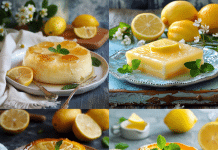In the realm of culinary practices, there exist peculiar rituals that transcend socioeconomic boundaries. Among these is a seemingly enigmatic act: placing a sheet of aluminum foil in boiling water. While this practice might appear mundane, its adoption by individuals across various economic strata raises the question: what compels even affluent individuals to engage in this seemingly frugal act? The answer lies in the convergence of science, practicality, and cultural tradition.
First and foremost, the utilization of aluminum foil in boiling water serves a practical purpose: to expedite the boiling process. When a sheet of aluminum foil is added to water on the verge of boiling, it accelerates the formation of bubbles. This phenomenon, known as nucleation, occurs because the foil’s surface provides sites for air bubbles to form, jumpstarting the boiling process. Consequently, this reduces the time required for water to reach its boiling point, thereby expediting food preparation—a convenience appreciated by individuals of all walks of life.
Furthermore, the use of aluminum foil in boiling water is not solely rooted in practicality but also intertwines with cultural tradition. Across various culinary traditions, particularly in Asian cuisine, adding aluminum foil to boiling water is believed to enhance the cooking process. It is thought to impart a subtle metallic taste to the water, which in turn flavors the food being cooked. This practice, while not scientifically validated, is deeply ingrained in culinary customs and continues to be passed down through generations.
Moreover, the affordability and accessibility of aluminum foil render it an indispensable kitchen tool, regardless of one’s financial status. Unlike certain gourmet ingredients or specialized cookware, aluminum foil is a ubiquitous household item that transcends socioeconomic barriers. Thus, its utilization in cooking practices reflects not only practicality but also universality—a testament to its versatility and indispensability in culinary pursuits.
Interestingly, the adoption of seemingly frugal practices by affluent individuals reflects a broader trend towards sustainability and resourcefulness. In an era increasingly characterized by environmental consciousness, even the wealthiest among us are embracing practices that minimize waste and maximize efficiency. Placing a sheet of aluminum foil in boiling water exemplifies this ethos, as it optimizes energy usage and minimizes the environmental footprint associated with food preparation.
In conclusion, the act of placing a sheet of aluminum foil in boiling water transcends mere practicality—it embodies a convergence of science, tradition, and sustainability. Whether employed to expedite the boiling process, enhance culinary flavors, or minimize environmental impact, this practice underscores the universal appeal of resourcefulness in the kitchen. So the next time you witness someone, regardless of their wealth, adding aluminum foil to boiling water, remember: it’s not just about the foil—it’s about a culinary tradition that spans cultures and socioeconomic divides.



























